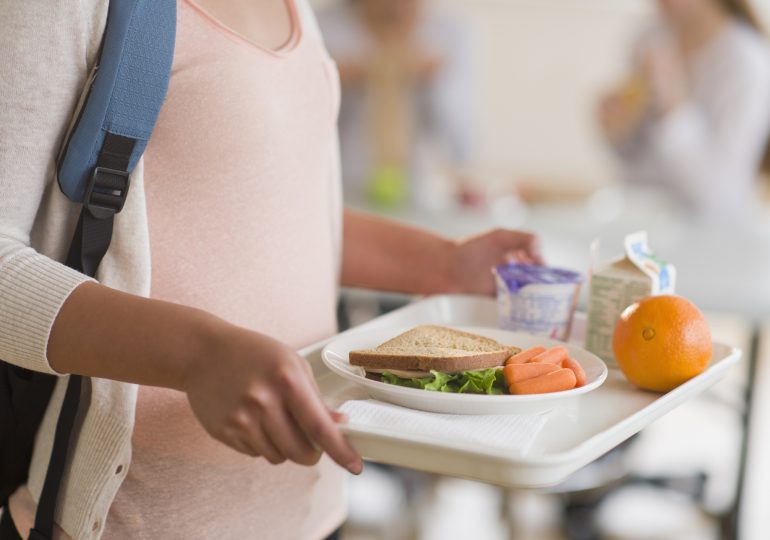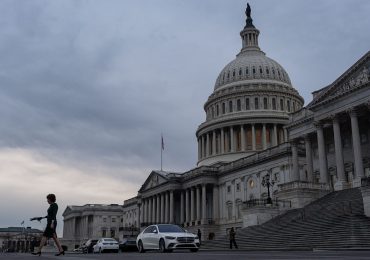As fall semester of college is in full swing, nearly a quarter of students face a little-discussed, yet pernicious challenge: food insecurity.
According to a 2024 study by the U.S. Government Accountability Office (GAO), in 2020, 3.8 million college students reported experiencing food insecurity. More than half of these students reported skipping meals or not eating multiple times a day because they couldn’t afford food.
This food insecurity crisis didn’t come out of the blue. College students have struggled to access sufficient food for decades. What used to be viewed as the college trope of a student eating ramen for four years has become a full-blown crisis. More students with lower incomes and less generational wealth are enrolling in college. The cost of attending has grown along with increased food, housing, and other living expenses.
[time-brightcove not-tgx=”true”]
The recent GAO report provides the first-ever national systemic data on just how prevalent this crisis is.
Make no mistake: It takes a massive toll on students—and our economy. Research consistently shows that food insecurity hinders student performance and reduces college completion rates. That can delay or derail students’ careers and deprives our economy of much-needed, college-educated workers.
I experienced food insecurity myself as a young, single mother who was fighting to get out of poverty by attaining a college degree. My four-year degree dragged on 12 years as I worked to support myself and my family.
Read More: Millions of Americans Face Food Insecurity. They Need Help.
The Supplemental Nutrition Assistance Program (SNAP), which helps people with lower incomes afford food, could theoretically help quell this food disaster. But in its current form, the program excludes millions of college students. That’s a massive policy blunder.
Currently, to access SNAP, applicants must have income below set poverty thresholds and meet certain citizenship and household criteria. People who are enrolled in a higher education institution at least half-time must also fulfill one other criterion to qualify. Some criteria include working 20 hours per week on average or participating in work study.
Lawmakers passed these restrictions decades ago over unfounded concerns that students who were supported by their parents would abuse the program. Policymakers speculated that students supported by higher-income families would claim to be low-income by counting themselves as separate households. But there’s no research to indicate this has ever happened on a wide scale—any “evidence” is purely anecdotal.
Nevertheless, these restrictions continue to block many individuals from accessing necessary nutrition support that could help them finish college, and sooner. The GAO report found that 4.5 million students who were enrolled at least half-time met the income thresholds for SNAP participation. But only 3.3 million met one of the exemption criteria— mostly by working at least 20 hours per week.
That’s already a hefty task for students while managing their course load. But on top of that, two-thirds of these students reported not receiving any SNAP benefits despite appearing eligible.
Unsurprisingly, the food insecurity crisis doesn’t affect all schools and students equally. A higher share of food insecure students attend minority-serving and for-profit institutions. Students experiencing homelessness, former foster youth, genderqueer, and gender nonconforming students, and first-generation students are also particularly vulnerable to food insecurity.
These food insecurity issues have wide-reaching impacts. Students struggle to perform at their highest level if they don’t have enough food. And working more hours results in less successful education outcomes. If they don’t graduate, they lose crucial opportunities to advance in their careers and achieve higher incomes. In fact, over 40 million people have attempted college but did not achieve a credential, which most attribute to financial challenges.
Ultimately, the system re-entrenches the cycle of poverty that made students food insecure in the first place. Case in point: Instead of completing my degree sooner, I was routed into poverty-sustaining wage jobs that forced me to continue to use public programs to survive, and delayed my ability to be economically secure. Restrictions on SNAP didn’t help me, my son, government programs, or my contributions to the tax system. Restrictions kept me in the system.
Our country also can’t afford to miss out on college-educated workers. A 2023 report from Georgetown University found that 72% of jobs will require postsecondary education or training by 2031 and over 40% will require a bachelor’s degree. By failing to address food insecurity now, we’re also hurting our economy for the long haul.
It doesn’t have to be this way. SNAP can and should ensure people can access an education that we know leads to greater economic security. SNAP serves almost 80% of eligible households on average, but just 30% of students in need.
SNAP is governed by the Agricultural Improvement Act, commonly known as the Farm Bill, which is traditionally reauthorized every five years. The legislation governs many other programs – including agriculture subsidies and disaster aid—but nutrition programs comprise the largest share. The reauthorization process is the window of opportunity to retool programs to reflect current and future economic conditions over the next five-year period. The program should have been reauthorized last year, but the deadline was extended due to partisan divide. The deadline is now set for the end of this month.
We should take advantage of this opportunity. SNAP has a long history of support across the aisle. Ensuring SNAP does not force people to choose between pursuing college or meeting their basic need for food is a commonsense adjustment that should have bipartisan appeal.
Notably, other national programs—including the Workforce Innovation & Opportunity Act (WIOA) and the Strengthening Career and Technical Education for the 21st Century Act (Perkins) program already promote the pursuit of postsecondary credentials and degrees. Adjusting SNAP would simply bring it in line with other similar programs.
Leave a comment








